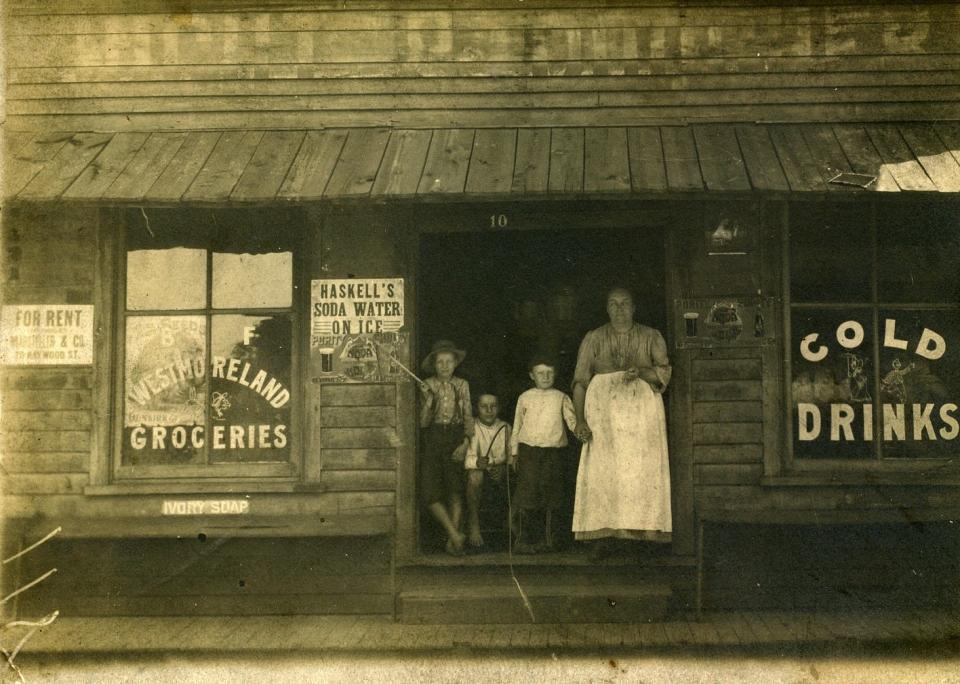Visiting Our Past: West End was an 'incubator neighborhood' for Asheville families
There was the time, in the 1950s when Peggy Guest-Totherow and her friends saw a ghost. They were sitting on the steps of the Queen Carson School in Asheville's West End neighborhood when a movement on the second-floor balcony of the Ida Jolly Crawley house across the street caught their attention.
"I looked up," Guest-Totherow recalled in a 2005 interview conducted by West End residents, "and there was a woman with a long white dress on, and she had long white hair. I'm getting chills just thinking about it. And I said, 'Kids, who is that?' And those kids got so scared, they screamed and ran."

The Queen Carson School is now a ghost of a building, demolished by the city in 1960. The Crawley house, built in the 1880s by Peter Demens, a Russian-born, riverside sawmill operator, was later occupied by Col. and Mrs. James Rumbough, owners of Mountain Park Hotel in Hot Springs; and Ida Jolly Crawley, a painter. It is now the residence of Howard Hanger and a community of tenants.
After her sighting, Guest-Totherow did some investigating. She learned that the ghost was the image of Ida Crawley, and it had appeared on the anniversary of her death. When Peggy had warned Ida's specter about falling, the ghost had smiled and shook her head no.
Perhaps the genial spirit of a former resident of Prospect Park, the high-end section of the West End neighborhood, was a sign. Her confident demeanor on the precipice of an unbordered rooftop bespeaks the history of the community. After taking many hits — the 1916 flood, the Depression, industrial closings, urban renewal and highway cut-throughs — what is now called the West End/Clingman has climbed back from the precipice to become a model of neighborhood improvement.
The West End/Clingman Avenue Neighborhood Association, formed in 1997 in response to Asheville's forward-looking 2010 plan, has brought together residents of all incomes, and the white and Black communities of West End and Clingman Avenue, to build parks, clean streets, throw parties and attract funding. The association is intent upon maintaining diversity and holding off the displacing effects of gentrification.
"The biggest irony of it now being a place where you can buy a half-million-dollar condominium is that the (original residents) lived rough; they made do the best they could," says Byron Ballard, fourth-generation West End resident. "It was ... an incubator neighborhood for families that went on to become notable Asheville families, and yet it stayed this kind of half-wild, semi-lawless place for a long time."
More: Visiting Our Past: Even in 1900, walking along Patton Avenue in Asheville was difficult
More: Visiting Our Past: Factory owner's luck and pluck took a hit during the Depression
Ballard's great-grandparents, Benjamin Franklin and Lillian Moore Westmoreland, moved to West End in the late 1890s for two reasons, family legend tells: to be near his place of work, the Biltmore Estate, where he was a laborer, and to escape his in-laws, a large, overwhelming Canton family. B.F., who lived a long life with one lung, established one of the first stores in the post-railroad West End, concocted get-rich schemes and inventions, and acted as a middleman in a bootlegging operation.
"My mother remembered those bottles being around the house," Ballard relates, and his grandparents "hiding bottles of illegal moonshine in her crib when she was little."
The story of West End is the story of people getting a foothold on life with first homes and cash-paying jobs, and it is one of upward mobility. When Ballard's grandmother, Helen Westmoreland (later Boyd), applied for a job in the Asheville Cotton Mill, her brother Roy stepped in. He got her a job at Green's Hardware on Pack Square instead. Ottis Green, the hardware store owner, had been mayor of Asheville and was part of the prominent Green family that had lived in West End.
"Roy was familiar with the cotton mill," Ballard recounts, "and he said the conditions were just hellish, and he didn't want his baby sister working there. The workers couldn't breathe. There were neighbors all around who had brown lung."
More: Visiting Our Past: Roads have always gotten their way in the mountains
More: Visiting Our Past: Ornamented buildings have become things of the past
Jessie Coleman, a longtime African American resident of West End/Clingman, and a member of the WECAN board, tells of her family's upward mobility. When she moved to the area in 1945, she was 8 and was shocked by the living conditions there compared to her family's previous place.
But, Coleman realized, "We had more pride than we had on Blanton Street. This house was a house my mother was buying. Over there she was renting." Today, she says, "I have a dream of Black and white living together, talking together, playing together, and not any real fancy homes coming in" and taking over.

Rob Neufeld wrote the local history feature "Visiting Our Past" for the Citizen Times until his death in 2019. This column originally was published Dec. 13, 2007.
This article originally appeared on Asheville Citizen Times: Visiting Our Past: Asheville West End was an 'incubator neighborhood'

